#the Loreto chapel
Text

The Loretto Chapel "Miraculous Stair" in New Mexico. It was mysteriously built in the 1850s without the use of nails or glue and lacks a central pole or external supports. It remains a marvel to woodworkers and carpenters for seemingly defying physics, while today certainly replicateable, it stands a monolith of cutting edge design considering its time period.
#interiors#design#carpentry#woodworking#staircase#santa fe#new mexico#aesthetic#vintage#style#old school cool#beauty#1800s#the Loreto chapel
35 notes
·
View notes
Text
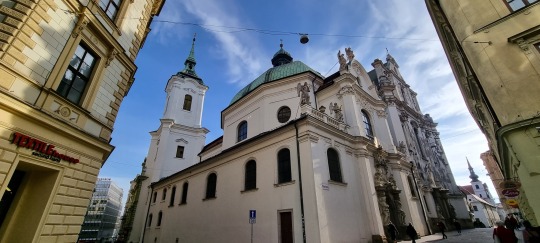


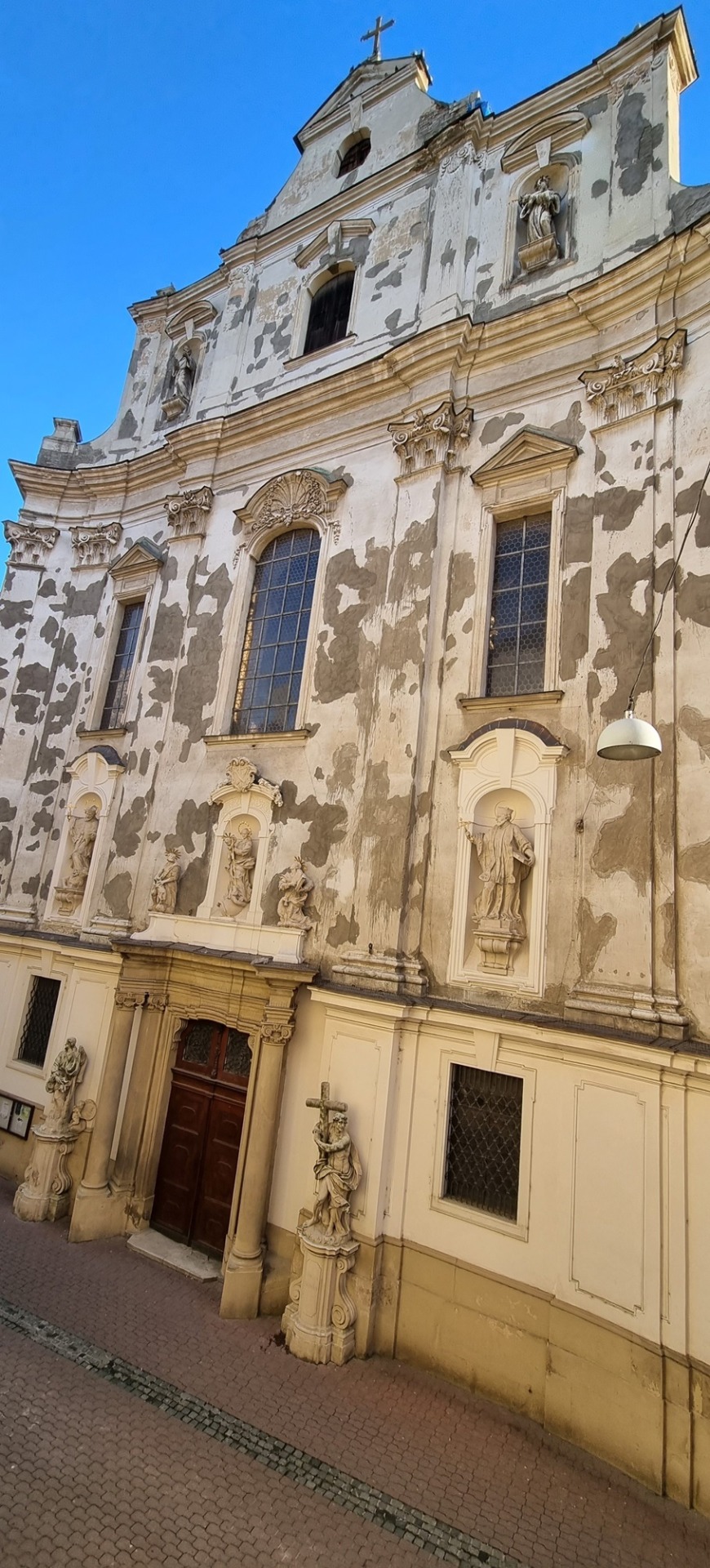

St. Johns' Church with the Loreto Chapel and Minorite Monastery in Brno (Church of Sts. John the Baptist and John the Evangelist)
Minoritský kostel sv. Janů v Brně (Kostel svatého Jana Křtitele a Jana Evangelisty), Brno
St. Johannes-Minoritenkirche mit Loretokapelle (Kirche der Hll. Johannes der Täufer und Johannes der Evangelist), Brünn
Костёл Святых Янов при Монастыре миноритов (Храм святых Иоанна Крестителя и Иоанна Богослова), Брно
#St. Johns' Church#Loreto Chapel#Minorite Monastery#John the Baptist#John the Evangelist#Minoritský kostel#Kostel sv. Janů#Jan Křtitel#Jan Evangelista#St. Johannes-Minoritenkirche#Loretokapelle#Johannes der Täufer#Johannes der Evangelist#Костёл Святых Янов#Монастырь миноритов#Иоанн Креститель#Иоанн Богослов#Brno#圣若翰洗者圣若望宗徒教堂#俗称圣若望教堂#圣若望教堂#布尔诺#Brünn#Брно#Morava#Mähren#Моравия#Moravie#Morávia#摩拉維亞
2 notes
·
View notes
Photo
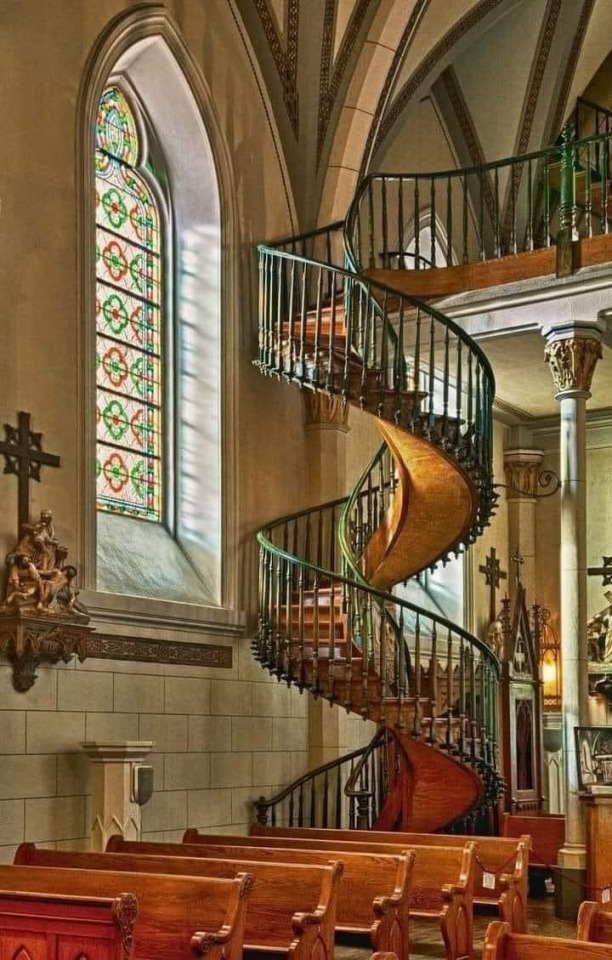
#Loreto's Miraculous Staircase#Loreto#Chapel#Santa Fe#New Mexico#Interior#Staircase#Spiral Staircase#Travel#Architecture#Southwest
1 note
·
View note
Text
youtube
#loreto#Loretto#Kapelle#chapel#Jesus#Kirche#evangelisch#katholisch#deutschland#urbex#loretokapelle#pilgern#pilgerte#wandern#wanderer#Youtube
0 notes
Photo
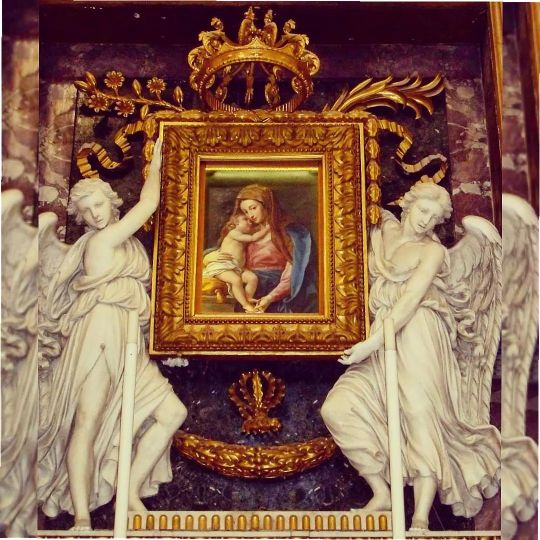
Urbino (Marche). Cathedral (1021 - 1480 - 1789). Interior. Renovated after two earthquakes in neoclassical style at the end of the eighteenth century, the interior of the cathedral of Urbino is in the shape of a Latin cross, with three white naves covered by a barrel vault, crowned, at the transept crossing, by a majestic coffered dome. Shots: a) transept, left altar dedicated to Our Lady of Mercy, the canvas is attributed to Pompeo Batoni; b) central nave and high altar; c) small chapel; d) Madonna di Loreto (17th century), altarpiece by Claudio Ridolfi, left aisle, fourth altar. #shots #style #latin #lady #cover #barrel #crown #shape #urbino #marche #cathedral #interior #renovate #white #small #mercy #dedicated #majestic #travel #traveling #visiting #instatravel #travelling #tourism #instatraveling #travelgram #travelingram #massimopistis #sovVERSIvi #estremisti Information for the purchase of my new book "Extremists!": The book at a cost of 12.00 euros (120 pages), can be ordered in the bookstore (ISBN 978-88-591-5719-9 - Editore Aletti) or requested to the e-mail [email protected] with additional postage (currently 1.28 euros - fold of books). https://www.instagram.com/p/CmE8LGXNFf9/?igshid=NGJjMDIxMWI=
#shots#style#latin#lady#cover#barrel#crown#shape#urbino#marche#cathedral#interior#renovate#white#small#mercy#dedicated#majestic#travel#traveling#visiting#instatravel#travelling#tourism#instatraveling#travelgram#travelingram#massimopistis#sovversivi#estremisti
2 notes
·
View notes
Text
Icons & Feast: Sunday, August, 28, 2022
august 28_august 14
THE DORMITION FEAST
youtube
first 1:22 mn
HOMILY TO THE DORMITION FEAST_2022
By Metropolitan Luke of Zaporozhye and Melitopol
Translation by OrthoChristian.com
From the point of view of a secular, unbelieving person, this day is madness for us. If you love someone, could his death be a feast day for you? Yes, it can! And not just a feast day, but the greatest victory—the victory over death. If the Lord Jesus Christ is the God-Man, then His Resurrection was natural. After all, God cannot die. Christ’s divine nature is immortal, and it would follow that human nature in Him acquired immortality. But the Mother of God is like us in every way. She is flesh from flesh, bone from bone a true human being, having only our human nature. And so we see that for the first time in the history of the world, an ordinary human being has attained immortality. And moreover, she was taken up to eternal life in both body and soul, where even the highest divine spirits cannot penetrate. The Life and Dormition of the Mother of God is an ideal example of what mankind is called to in God’s plan for it.
The end of each one of our lives leads to one of two results—either death or dormition. A person will become either a corpse or a reposed one. It all depends upon how and for what he lived. Those who go to death cling to this life, to their health, their families, their houses, work, and so on. That is because their hearts cling to the earth, and they don’t know anything better than it. But those who were able in their earthly lives to get a taste of Heaven, its sweetness and grandeur, burn with the desire to leave this life as soon as possible in order to be with their beloved God. For I am in a strait betwixt two, having a desire to depart, and to be with Christ; which is far better (Phil. 1:23).
When the soul in the spirit comes to know God and His love, there is nothing dearer to him. But in order that the soul be united with the spirit it must conquer its attachment to the flesh. If this does not happen, then after the death of the body, the soul remains alone and filled with passions and lusts. After the general resurrection our bodies will return to us with a different nature, because flesh and blood cannot inherit the Kingdom of God (1 Cor. 15:50). Our body will be renewed, but the soul will remain the same as it was when it left its earthly body. Death is when all around there is light, joy, and peace, but inside is darkness, stench, and godlessness. From this we can conclude that whether we go to dormition or to death depends on how we live this brief, temporary earthly
ICONS OF THE MOTHER OF GOD
"Mosdok" (13th c.)
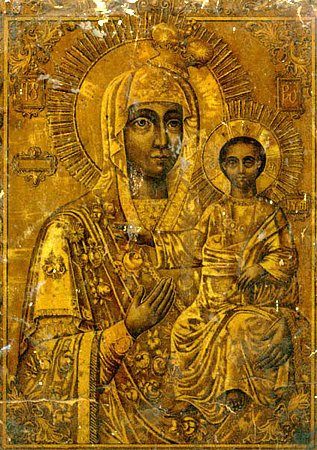
The Mozdok Icon of the Mother of God, a copy of the Iversk icon, was sent in the XIII Century by the holy empress Tamara as a gift to the newly-enlightened Christians of the Ossetian aul (village) of Mar'yam-Kadu. In 1768 this icon appeared remarkably on the banks of the Terek, not far from Mozdok. Bishop Gaii built a chapel for the icon. In 1796-1797 there was built at the place of the chapel a church in honour of the Uspenie (Dormition or Repose) of the MostHoly Mother of God, along which was soon founded a women's monastery (abolished together with the Mozdok diocese in 1799). At the end of the XIX Century the inhabitants of Mozdok built a splendid church in honour of the Mozdok-Iversk icon of the Mother of God. The Mother of God has repeatedly rendered speedy aid to the believing through Her holy icon.
“Enlightener of Minds”
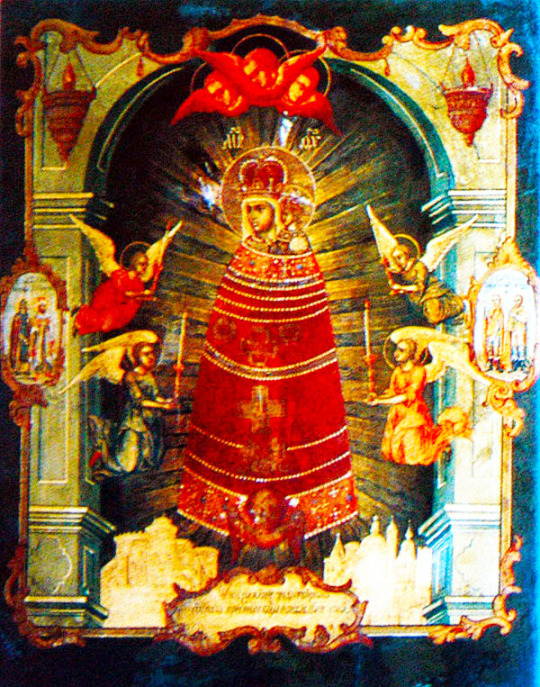
This unusual icon comes from the Russian town of Rybinsk, in Yaroslavl province. The Mother of God and the Divine Child are wrapped in what appears to be a priest’s phelonion, and Angels are depicted on either side, holding lighted candles. Beneath the Virgin’s feet and on her head Cherubim are depicted with outstretched wings.The model for this Icon is a statue in the town of Loreto in Italy, which is wrapped in a similar covering.
The “Enlightener of minds” Icon (Подательница ума) reflects the deep faith of Orthodox Christians in the power of the All Holy Virgin to intercede before God and His Son to bestow both temporal and spiritual blessings. Foremost among these is enlightenment of the mind and heart through Divine Truth.
For this reason, parents whose children are slow learners, either in matters of the Faith or in secular knowledge, often turn to the Most Holy Theotokos and her Divine Child, Who is the fount of the loftiest wisdom and knowledge, praying for their children’s minds be strengthened and that they may retain what they are taught. People also entreat the Mother of God to help them overcome delusion and mental illness.
The Enlightener of Minds icon is commemorated on August 15.
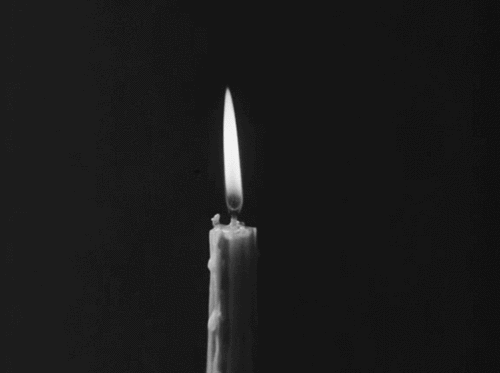

LUKE 10:38-42; 11:27-2838
Now it happened as they went that He entered a certain village; and a certain woman named Martha welcomed Him into her house. 39 And she had a sister called Mary, who also sat at Jesus' feet and heard His word. 40 But Martha was distracted with much serving, and she approached Him and said, "Lord, do You not care that my sister has left me to serve alone? Therefore tell her to help me." 41 And Jesus answered and said to her, "Martha, Martha, you are worried and troubled about many things. 42 But one thing is needed, and Mary has chosen that good part, which will not be taken away from her.
27 And it happened, as He spoke these things, that a certain woman from the crowd raised her voice and said to Him, "Blessed is the womb that bore You, and the breasts which nursed You!" 28 But He said, "More than that, blessed are those who hear the word of God and keep it!"
1 CORINTHIANS 9:2-12
2 If I am not an apostle to others, yet doubtless I am to you. For you are the seal of my apostleship in the Lord. 3 My defense to those who examine me is this: 4 Do we have no right to eat and drink? 5 Do we have no right to take along a believing wife, as do also the other apostles, the brothers of the Lord, and Cephas? 6 Or is it only Barnabas and I who have no right to refrain from working? 7 Who ever goes to war at his own expense? Who plants a vineyard and does not eat of its fruit? Or who tends a flock and does not drink of the milk of the flock? 8 Do I say these things as a mere man? Or does not the law say the same also? 9 For it is written in the law of Moses, "You shall not muzzle an ox while it treads out the grain." Is it oxen God is concerned about? 10 Or does He say it altogether for our sakes? For our sakes, no doubt, this is written, that he who plows should plow in hope, and he who threshes in hope should be partaker of his hope. 11 If we have sown spiritual things for you, is it a great thing if we reap your material things? 12 If others are partakers of this right over you, are we not even more? Nevertheless we have not used this right, but endure all things lest we hinder the gospel of Christ.
#orthodoxy#orthodoxchristianity#easternchristianity#originofchristianity#spirituality#holyscriptures#gospel#wisdom#icon#sacredart
3 notes
·
View notes
Text
Lady of Loreto Chapel established in 1749 sits within the walls of Fortress Presido La Bahia.
0 notes
Link
Check out this listing I just added to my Poshmark closet: Saint Joseph of Cupertino DVD by Bob & Penny Lord, New.
0 notes
Text
THE CHAPEL (2023) Supernatural horror by Carlota Pereda (Piggy) - preview with trailer
The Chapel is a 2023 Spanish supernatural horror film about a young woman who wants to contact the spirit of a dead girl.
Directed by Carlota Pereda (Piggy) from a screenplay co-written with Albert Bertran Bas and Carmelo Viera. Produced by Laura Fernández Brites, Carlos Fernández, Iñaki Gómez and Pablo Echart.
The Filmax production stars Belén Rueda, Maia Zaitegi, Josean Bengoetxea and Loreto…

View On WordPress
#Belen Rueda#Carlota Pereda#Josean Bengoetxea#La Ermita#Maia Zaitegi#preview#Spanish#supernatural horror#The Chapel#trailer
0 notes
Text
An Eternal City Through the Lens - Capturing Rome's Charm
The Eternal City Through the Lens - Capturing Rome's Charm
Discovering Rome's Timeless Beauty
Rome is a city that needs no introduction. The capital of Italy is a city that has played a significant role in shaping the world's history, culture, and architecture. Discovering Rome is like peeling back layers of history. Rome has been called many things over the centuries, such as the Eternal City, the City of Seven Hills, but no matter what it's called, Rome is timeless.
Walk the streets
One of the best ways to discover Rome's timeless charm is by simply walking the streets. Walking is a great way to explore the city's nooks and crannies. You can see the magnificent Colosseum, the ancient ruins of the Roman Forum, and the grandeur of the Pantheon. If you're a fan of Caravaggio, you can visit the Church of St. Augustine to see his painting "The Madonna of Loreto."
Visit Vatican City
Vatican City is an independent city-state surrounded by Rome. It's the smallest country in the world, and the epicenter of the Catholic Church. A visit to Vatican City is a must-do for visitors to Rome. Some of the most stunning works of art are housed within the Vatican Museums, including Michelangelo's Sistine Chapel. St. Peter's Basilica is another highlight and is one of the world's largest churches and the home to many famous sculptures and artworks.
Experience Rome's food culture
Rome is known for its food culture as much as it is for its beautiful architecture. From pizza and pasta to gelato and espresso, there is something for everyone. Try out some of the popular dishes such as carbonara, cacio e pepe, and supplì. For dessert, a scoop of gelato or a slice of tiramisu from a local bakery will hit the sweet spot. Additionally, Rome has many open-air markets where you can shop for fresh produce, cheese, and cured meats.
Take in the nightlife
Rome's nightlife is just as vibrant as its daytime activities. There are numerous bars, pubs, and nightclubs where one can experience Roman night-time culture. Trastevere is a popular area for bars, and Campo de' Fiori offers several evening spots as well.
Overall, Rome is a city that can be experienced in many ways. Whether you choose to walk the streets, visit the Vatican City, experience the food culture, or take in the nightlife, Rome has plenty to offer. Its timeless charm is evident in every street corner and every alleyway. So, the next time you find yourself in Rome, let the city's beauty and history captivate your heart and soul.
Best Photography Spots in the Eternal City
1. Colosseum:
The Colosseum is the most iconic landmark in Rome and one of the best places to capture the Eternal City's essence. Photography enthusiasts can capture great shots of this iconic monument during the early morning hours when the setting sun casts a warm glow making for the perfect lighting conditions.
2. Pantheon:
The Pantheon is one of the oldest and most well-preserved buildings in Rome. The best time for photographers to take pictures of the Pantheon is during the late afternoon when the natural light casts a warm glow on the ancient building, highlighting its stunning architecture.
3. Piazza Navona:
The Piazza Navona is one of the most beautiful squares in the city and is a popular spot for tourists and photographers. The square is full of ornate fountains and buildings, providing ample opportunities for capturing great photos.
4. Roman Forum:
The Roman Forum is a testament to the grandeur of the Roman Empire. Photographers can capture the magnificence of the forum in early morning light, when the sun is low, casting beautiful shadows and creating striking contrasts.
5. Vatican City:
The Vatican City is a treasure trove for photography enthusiasts. One of the best places to capture the city's charm is from the top of St Peter's Basilica. The panoramic view of the city from the top of the dome is a sight to behold.
6. Trastevere:
Trastevere is a charming neighborhood, located on the west bank of the Tiber River. It is an excellent spot for capturing the charming streets and alleys of the Eternal City. Photographers can capture the vibrant colors of the buildings and the unique blend of ancient and modern architecture.
7. Spanish Steps:
The Spanish Steps are one of Rome's most iconic landmarks and a popular spot for both locals and tourists. The best time to take photographs of the Spanish Steps is during early morning hours when the light is soft and warm.
8. Trevi Fountain:
The Trevi Fountain is one of the most famous fountains in the world. Photographers can capture beautiful shots of the fountain by visiting early in the morning or late at night when the tourists are few, and the lighting is perfect.
9. Janiculum Hill:
Janiculum Hill is one of the highest points in Rome and offers breathtaking views of the city. The best time to take photographs from Janiculum Hill is during sunset when the city is bathed in golden light.
10. Castel Sant'Angelo:
Castel Sant'Angelo is a towering fortress that has stood the test of time. Photographers can capture stunning views of the Tiber River and the city from the top of Castel Sant'Angelo.
Tips and Tricks for Capturing Rome's Charm
1. Wake up early:
Rome is one of the busiest cities in the world, and you do not want to capture photographs in a rush of crowds. Therefore, the key to getting some of the most stunning shots is to wake up early and head out to the city. Early morning sunlight adds a unique charm to the city that you will not be able to capture during the rest of the day.
2. Take a walk:
One of the best ways to capture the true essence of Rome is to put on a pair of walking shoes and explore the city's most vibrant neighborhoods on foot. Some of the best spots for street photography include Trastevere, Monti, and Testaccio.
3. Use natural light:
Rome is famous for its beautiful natural light, which gives the city's buildings a golden glow. Therefore, it is recommended that you take advantage of natural light and try to shoot during different times of the day to see how the light affects the scene.
4. Visit the iconic spots:
No trip to Rome would be complete without capturing photographs of the city's most iconic landmarks. Some of the places you should consider visiting include the Colosseum, the Pantheon, and the Vatican.
5. Get creative with angles:
To capture the charm of Rome, it is essential to take photographs from different angles. With a little creativity, you can produce some of the most unique shots of famous landmarks.
6. Capture the locals:
One of the best ways to capture Rome's charm is to capture the locals going about their daily lives. Try to capture street vendors, performers, and couples enjoying their meals in sidewalk cafes.
7. Experiment with black and white:
Rome's architecture is breathtaking and sometimes becomes more noticeable when captured in black and white. Try experimenting with converting some of your images to black and white.
8. Make use of shadows:
Rome is a city of shadows, and capturing these shadows can add incredible depth to your photographs. Try capturing the shadows that the ancient buildings cast on the road during different times of the day.
9. Use a tripod:
In low light situations or when shooting at night, a tripod can be a lifesaver. If you want to capture some of the best shots of Rome at night, it's recommended that you use a tripod to prevent any blurs.
10. Study the city:
Finally, to capture Rome's charm, it is necessary to take the time to study the city and its culture. This will help you understand the essence of this beautiful city and appreciate it even more.
Exploring Rome's Hidden Gems Through Your Camera Lens
While Rome is known for its iconic monuments and landmarks, there are several hidden gems scattered across the city that are just as picturesque. Here are a few off-the-beaten-path locations that photographers should add to their must-visit list.
The Orange Garden (Giardino degli Aranci)
Located on top of the Aventine Hill, the Orange Garden offers a breathtaking view of the city. It's the perfect spot to capture the sunrise or sunset, with the dome of St. Peter's Basilica visible in the distance. The garden is filled with orange trees, hence its name, and has a romantic atmosphere that's ideal for couples.
The Keyhole of the Knights of Malta (Il Buco della serratura)
A narrow street on the Aventine Hill leads to the headquarters of the Knights of Malta, an ancient Catholic order. The highlight of this location is a keyhole that offers a peek into the Vatican. From the right angle, you can see the dome of St. Peter's Basilica framed by the Knights of Malta's garden.
The Appian Way (Via Appia Antica)
The Appian Way is one of the oldest and most important Roman roads that links Rome to Brindisi in southern Italy. It's lined with tombs, catacombs, and ruins that provide a glimpse into the Roman Empire's grandeur. Photographers can capture the beauty of the countryside, as well as the historical monuments, on a bike tour of the Appian Way.
The Protestant Cemetery (Cimitero Acattolico)
This cemetery is the final resting place of many famous artists, writers, and scholars, including John Keats and Percy Bysshe Shelley. The cemetery is a green oasis in the heart of Rome, with cypress trees and flowers adding color to the scenery. Photographers can capture the peaceful atmosphere and the beauty of the headstones, which are works of art in themselves.
Tram Tracks (Tranvai)
Trams are an iconic part of Rome's public transportation, and the tram tracks are a unique feature of the city's streetscapes. Photographers can capture the symmetry of the tracks and the energy of the busy streets from a high vantage point. Try taking photos from the bridge overlooking the tracks near the Piramide station for a great shot.
Exploring Rome's hidden gems through your camera lens is an exciting way to capture the city's charm. These off-the-beaten-path locations offer a fresh perspective on Rome's beauty and history, giving photographers a chance to create unique, memorable images.
The Best Time of Day to Capture Rome's Magic
There is never a bad time to visit Rome, but if you're a photographer looking to capture the city's magic, there are certain times of day that are better than others. Here are our top recommendations:
Sunrise
Although it can be a challenge to wake up early, the rewards for capturing Rome at sunrise are worth it. The soft morning light creates a serene atmosphere and the city is relatively quiet. Some of the best spots for sunrise photography in Rome include the Pantheon, the Spanish Steps, and the Colosseum.
Midday
If you're looking to capture the colors and vibrancy of Rome, midday is the perfect time. The sunlight is strong and casts beautiful shadows and contrasts. Head to the Piazza Navona, the Trevi Fountain, or the Villa Borghese for some stunning midday shots.
Sunset
Rome's sunsets are truly magical, with hues of pink, orange, and purple illuminating the city. The soft, warm light creates a romantic atmosphere that's perfect for capturing the city's charm. Some of the best locations for sunset photography include the Vatican City, the Castel Sant'Angelo, and the Ponte Sant'Angelo bridge.
Blue Hour
The blue hour, the period of twilight when the sky turns a deep blue just after sunset or just before sunrise, is another great time to capture Rome's beauty. The soft light creates a moody, atmospheric feel, and the city's buildings and monuments are often illuminated, adding another layer of charm. Some great locations for blue hour photography include the Colosseum, the Piazza del Popolo, and the Trastevere neighborhood.
Whether you prefer the soft light of sunrise, the vibrant colors of midday, the romantic atmosphere of sunset, or the moody feel of the blue hour, Rome's magic can be captured at any time of day.
Editing Your Rome Travel Photos Like a Pro
After capturing stunning images of Rome, the next step is to edit them like a pro. The editing process can transform a good photo into a great one. Here are some tips on how to edit your Rome travel photos:
1. Adjust Brightness, Contrast, and Saturation
The first step is to adjust the brightness, contrast, and saturation of your photo. These three elements will help you to enhance the lighting and color of your image. Increase the brightness to highlight the details of your picture. Adjust the contrast to provide a better range of tones. Finally, saturate the colors to make the photo more vibrant.
2. Straighten and Crop Your Photo
Next, straighten and crop your photo. If your picture is slightly off-center, use the straightening tool to level it. If there are any unnecessary elements in the background, use the cropping tool to remove them. Cropping your photo can also help you to focus on the main subject of your image.
3. Remove Blemishes and Noise
Remove any blemishes and noise from your photo. This could be anything from a distracting tourist in the background to a stray hair. You can use the healing tool or clone tool to remove these elements. Additionally, if your photo has any noise or graininess, you can reduce it using noise reduction tools.
4. Use Filters and Presets
Filters and presets can be a quick and easy way to edit your photo. They can help you to achieve a certain mood or style. Try using black and white filters for a classic feel, or warm presets for a cozy ambiance. Just be careful not to overdo it, as too many filters can make your photo look artificial.
5. Sharpen Your Photo
Finally, sharpen your photo to enhance the details of your image. This can make your photo look clearer and more defined. Be careful not to oversharpen, as it can create an artificial look.
By following these tips, you can take your Rome travel photos to the next level. Remember to experiment and have fun with your editing, and don't be afraid to try new things!
Preserving Your Rome Memories Through Photography
One of the most important aspects of any vacation is capturing the memories to look back on in years to come. When it comes to Rome, there are countless opportunities to document your experiences and keep them alive through photography. With the city's ancient architecture, beautiful art, and vibrant culture, you'll want to make sure you capture as much as possible. Here are a few tips for preserving your Rome memories through photography:
1. Plan Ahead
Before you even leave for your trip, make sure you have all the gear you'll need. This includes a good camera (either a DSLR or a high-end smartphone), extra batteries and memory cards, a tripod (for night photography), and any lenses or filters you may want to use. Research some of the best photography spots in Rome so you can plan your itinerary around them and make sure you don't miss anything important.
2. Focus on the Details
While it's important to capture the famous landmarks of Rome (such as the Colosseum and the Pantheon), don't forget to focus on the smaller details as well. Rome is filled with intricate architecture, colorful street art, and unique cultural traditions that are worth documenting. Take a stroll through some of the city's quieter neighborhoods and keep your eyes peeled for interesting compositions.
3. Take Advantage of Golden Hour
Golden hour (the hour or so before sunset) is a magical time for photography, particularly in a city like Rome with its warm-colored buildings and soft lighting. Make sure you plan to be at your favorite photography spot during this time and take advantage of the beautiful light. You can also experiment with silhouettes and reflections during this time.
4. Don't Be Afraid to Experiment
While it's important to have a plan and get the shots you want, don't be afraid to experiment and try something new. Play with different camera settings, try out different angles and perspectives, and see what kind of creative shots you can come up with. Some of the best photos are the ones that break the rules.
5. Print and Display Your Photos
Once you've returned home and sorted through your photos, make sure you print and display your favorites. Whether you create a photo album, hang some frames on your wall, or even just bookmark them on your computer, make sure you have a way to revisit your memories whenever you want.
By following these tips, you'll be sure to capture all the beauty and charm of Rome through your photographs and have memories that will last a lifetime.
If you're looking for inspiration for your next French adventure, check out Photo-worthy France - A luxury guide for some stunning travel photography and insider tips.
Read the full article
0 notes
Photo
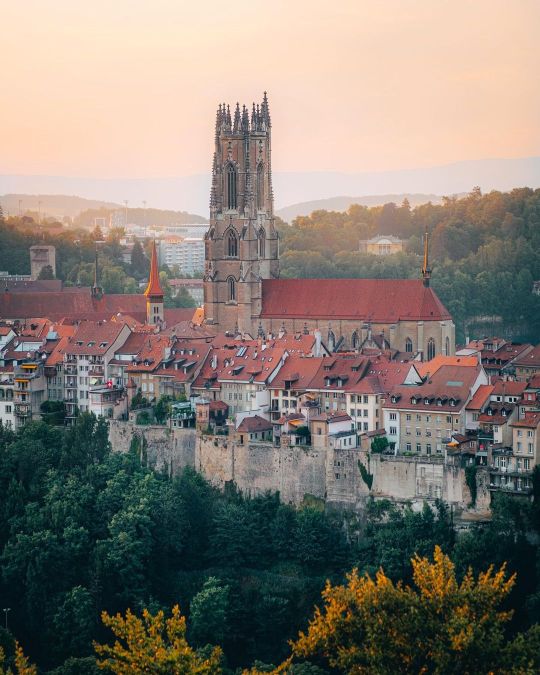
Anzeige - Thanks to @regionfribourg i was able to visit their beautiful and multi-faceted region again after I fell in love with it during my first stay. First Stop on my trip: Fribourg, a historic gem in the middle of Switzerland. The city, nestled on a rock promontory, is surrounded on three sides by the Sarine river. It is one of the largest medieval towns in Switzerland with around 200 unique Gothic facades from the 15th century adding to the medieval charm of the Old Town. A little Tip: The Italian-style early Baroque Loreto Chapel is great viewpoint over the city. And from the Neuveville district, a funicular railway takes you up to the pedestrianised area of the town centre. #fribourgregion #frhappy #fribourgtourisme #fribourg (at Fribourg, Switzerland) https://www.instagram.com/p/Cfj2tSqLPeK/?igshid=NGJjMDIxMWI=
1 note
·
View note
Photo


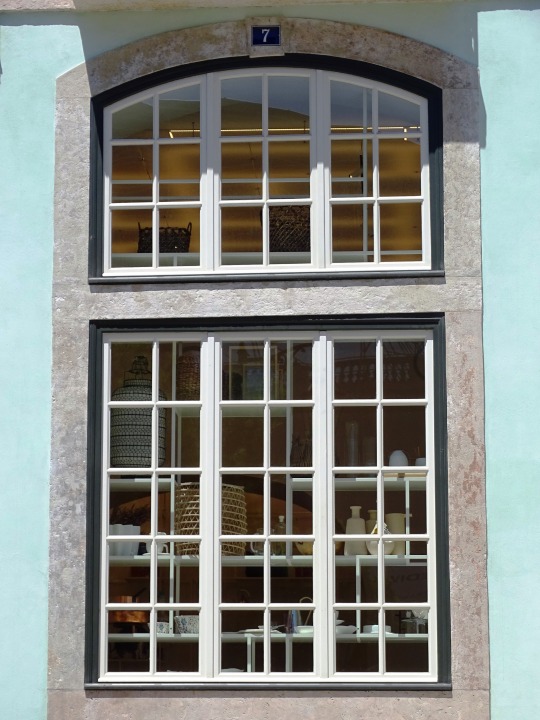



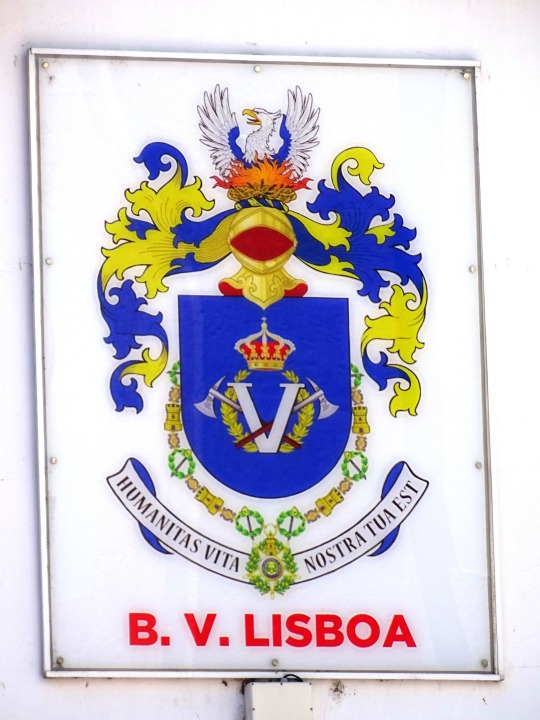
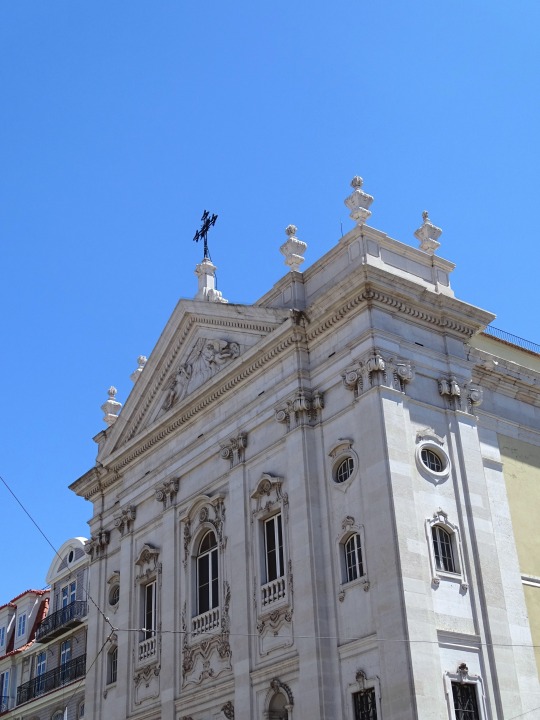
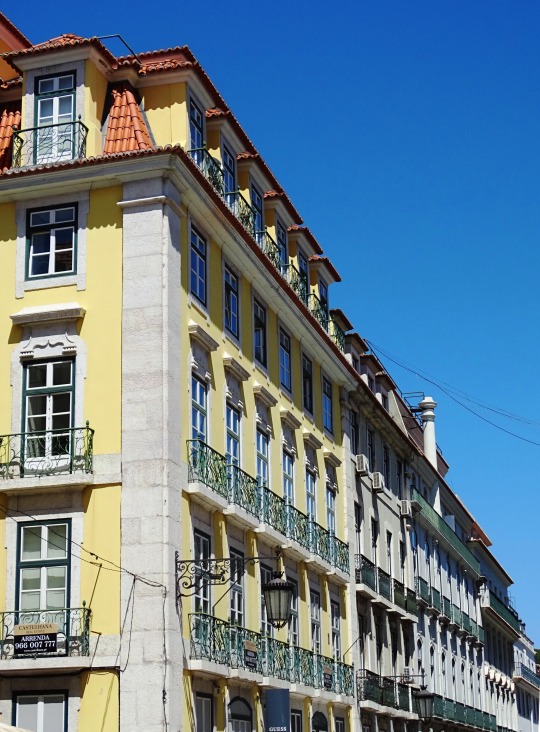

Architecture, Lisbon (No. 4)
The Church of Nossa Senhora do Loreto was built on the site of the city walls built by King Fernando to establish the western limits of 14th century Lisbon. Worship of our Lady of Loreto, extremely common in Italy, was introduced to Portugal by Italians in the 14th century. They came to work in professions connected with the sea and fishing. Some prospered even to the extent of taking prominent positions in the Portuguese court. It was very much due to this Italian community that a chapel to Saint Anthony was replaced by a much larger place of worship dedicated to the Virgin of Loreto incorporating a city wall tower into its northern façade.
The current church is dated 1676 after a fire in 1651 destroyed part of the original structure. On the frontispiece, over the architrave, there is a depiction of Our Lady of Loreto, set off by fine drapery, with the child peeking out over the left shoulder. On the entranceway, there are two angels bearing papal arms believed to be the work of the Italian Borromini (17th century). In the lateral niches, there are the apostles Peter and Paul, also clearly of Italian influence.
Source
#Bombeiros Voluntários de Lisboa#architecture#church#cityscape#travel#Igreja de Nossa Senhora do Loreto dos Italianos#original photography#façade#exterior#tourist attraction#landmark#Lisboa#Lisbon#Portugal#vacation#summer 2021#detail#windwo#balcony#roof#Italian Church of Our Lady of the Loreto#The Church of Nossa Senhora do Loreto#Iglesia de Nuestra Señora de la Encarnación#Igreja de Nossa Senhora da Encarnação
0 notes
Text

The main topic of this post, condensed into meme-format.
All those of you who've ever come into contact with the Asterix-comics will be familiar with its famous opener:
The year is 50 BC. Gaul is entirely occupied by the Romans. Well, not entirely... One small village of indomitable Gauls still holds out against the invaders. And life is not easy for the Roman legionaries who garrison the fortified camps of Totorum, Aquarium, Laudanum and Compendium...
Something quite like that actually happened, albeit not in Roman Gaul and to add a small disclaimer, no wild boars or Roman footsoldiers were harmed- though the pride of a Maréchal de France certainly was.
Gather 'round me, kind gentlepersons of the internet, for a story of the Wars of the Spanish Succession filled to the brim with military action, the courage of ordinary people just sick and tired of it all, a presumed divine miracle, and dead Frenchmen being responsible for the debauchment of local youths in the 20th and 21st centuries... (Notes and image credits under the cut at the end)
The year is 1704; the Wars of the Spanish Succession rage across Europe. One of its most famous battles is, no doubt, the Battle of Blenheim, the Duke of Marlborough's victory over the French and Bavarian forces near the town of Höchstädt in Bavaria. I am not going to recount the battle step by step; rather, I'm going to cover an event leading up to the battle that may have tipped the scales somewhat in favour of the Grand Alliance forces under Marlborough and Eugene of Savoy by tiring half of the French forces present at the Battle of Blenheim:
In July 1704, Camille d'Hostun, duc de Tallard, traversed the Black Forest with supplies and reinforcements, which was the only route open to the French at this point to re-supply the forces under Ferdinand, comte de Marsin to the east. Through difficult, mountainous terrain, Tallard managed to get his army across the mountains to the town of Villingen on its south-eastern foothills. Intending to take the town and make and store supplies there, Tallard took to besieging Villingen on 16 July. Which, as contemporaries such as Jean-Philippe-Eugène, Count de Mérode, who served under Tallard, noted was a mere "bicoque" with a medival ring wall; which a diplomatically inclined person might interpret as "a ramshackle town", and someone with less delicacy might translate more directly and pejoratively as "a dump".
For the inhabitants of this "dump" on the edge of the Black Forest however, being under siege was part of their more recent history: they had been besieged a couple of times over the course of the last century, only once taken by the French in the 1680s, and otherwise had successfully defended themselves against the threats of Sweden and Württemberg. The last time they had come under French fire had been the year prior; it's easy to imagine that the good people of Villingen had quite enough of sieges, and the French in particular.
Meanwhile, Tallard set up camp on a hill overlooking the town. The medieval town centre is at approximately 700m above sea level; the hill at approximately 750 m; prime conditions for the besieging party. On 20 July, Tallard intended to make short work of Villingen, firing at the town with the full force of his cannons.
Although Tallard may have picked a prime spot to lay siege on the town, is said to have managed to set two houses on fire and do some kind of damage to a further 200, the townspeople's dogged resilience, and above all, effective organisation, proved to be game-changing.
Whoever could, particularly the able-bodied male population including the few, scattered soldiers at hand, armed themselves with whatever was available to drive the French away from the breaches in the city wall; the rest tried to fill the breaches, particularly the main one near one of the four city gates with whatever heavy, obstructive materials were available (which was at some point filled surprisingly effectively with the contents of someone's dung cart).
I'll include a near-contemporary account of the siege from 1740: [1]


Apologies for the bad images- I was not comfortable stretching the spine any further.
Translation:
In the year 1688, the French had captured the town and on 16 July 1704, they, under the General Tallard, arrived yet again with a mighty force. The same encamped on the so-called Engelhard, and opened fire the very dame night, and dug his Trenches at the Hauben=Loch. He ordered to approach so speedily that he, despite the besieged firing tirelessly at them with their weapons, already had set up a battery of twelve embrasures on the morning of 18 July at the front of the hill, and commenced to fire upon the town with four half- and six quarter kartouwes. He continued to do so the following days and nights in such a manner that at the same time, he had the trenches extended ever further downhill until they reached street-level (where the weather hindered him quite considerably), and even came half a stone’s throw close to the Rith-Thor [Riettor, one of the city gates]. At the same time, he erected a second battery below the Hauben-Loch [Hubenloch, small hill even closer to the town than the French camp].
He ordered another two fieldpieces to be planted there, so that he was able to destruct from these two batteries the outer city wall and a parapet to the left of the Franciscan friary quite considerably over a breadth of fifty paces, creating a noticeable breach and quite ruining some fortifications on the inner wall. The besieged in turn resisted admirably and closed the breach with cut trees and dung so thoroughly, that their foes were unable to complete their design and tear down the day as quickly as the latter had hoped. During the night of the 20th, the besiegers designed to importune the town with the full force of their fire. They were firing upon the Rieth-Tor and the breach the whole night long, shooting red-hot balls from their pieces, causing two houses to catch fire, and around two hundred to be damaged. That aside, resistance of the citizens and soldiers had proven so effective, they escaped total destruction. For when Maréchal Tallard learned that the troops demanded by the town were approaching rapidly, and he additionally received the third order from the King of France to immediately continue his march towards Bavaria, he ended the siege, and left the Kinzig valley as quick as he could […].
Other than their impressively effective organisation, the townspeople had a secret weapon the French didn't know about: God.
Today housed in the Münster, the central church in town, is a 14th century cross carrying the image of the crucified Jesus. It does not look particularly striking, but according to legend, the Nägelinskreuz (the cross of Nägelin) possesses divine powers that shield the town from harm since the 15th century. Back then, a farmer by the name of Nägelin from a neighbouring valley happened to find the cross, picked it up and kept it in his home until one day, he fell very ill. In order to be restored to perfect health again, he received divine orders to go to Villingen, and donate the cross to the town, so it might shield it from "the dangers of faith, fire, and foe."
Now the above is clearly a legend dating to around or after the Thirty Years' War, as the "dangers of faith" indicate; but time and again, the town's inhabitants associated the cross with the prevention of destruction or harm. To this day, the town has preserved much of its historic architecture. The last time the cross is said to have put its divine powers to use is in 1945; during the last days of World War II, American bombers targeted the town and had already destroyed the railway lines and station outside the historic city centre, when all of a sudden, the pilots found themselves surrounded by fog so thick they grew disoriented and aborted their mission. A chapel close to the station had also been destroyed; in its ruins, the cross was found, intact.
Making all kinds of really bad weather appears to be the cross' signature-miracle because in 1704, instead of heavy fog, the French siege was thwarted by heavy rainfalls (as also referenced in the account above), which benefitted the besieged townspeople as the rain rendered French attempts to burn the town almost entirely ineffective, and must have made the French soldiers camped on the hillside rather miserable.

Johann Anton Schilling (1694-1724), Belagerung Villingens im Spanischen Erbfolgekrieg 1704, oil on canvas, 1716. In the collection of Franziskanermuseum Villingen, via museum-digital:baden-württemberg [accessed 1 September 2021]. The gentleman to the left in a white coat seated on a white charger is Tallard, to the right the French encampment with (presumably) his tent, the town of Villingen below. Above the town hovers the miracle-working town mascot-cross.
After eight days, things were not looking good for Tallard; the town still held out, intelligence reported Villingen could expect assistance from troops under Eugene de Savoy to arrive any time soon and Louis XIV himself had, unimpressed with his maréchal's inability to take a medieval "dump" with a ridiculous little city wall, written the third ordre to press on towards Bavaria, which Tallard then decided to do.
Here's what Jean Philippe Eugène de Mérode, Marquess of Westerloo, who was at the time serving in the French army and present at the siege, had to say about it:


Translation:
From thence [Alsace and Lorraine], we spread across the heights of Villingen, which we intended to take and which we committed to besieging the following day with the intention to set up our general stores. During that siege the convoy emerged, marching, from the Black Forest, a march of eight days, day and night. Although we attacked that dump in the manner of an open trench with batteries of cannons and bombs and although it was merely a simple antiquated wall, the inhabitants and what little of a garrison there was, defended themselves so well that after we had lost so many men and a lot of time, we were obliged to abandon it [the town] and continue in order to join the Elector of Bavaria. [2]
The following year, the grateful people of Villingen, associating their victory closely with the legend of the Nägelinskreuz and its divine properties, erected a chapel on the spot where Tallard's tent is said to have stood.
The Lorettokapelle (Loreto chapels are a specific type of chapel immitating the dimensions of the house said to have been inhabited by the Holy Family which was transported to Loreto, a town near Ancona in Italy during the 13th century) was dedicated in 1706 by a local abbot and has been in occasional use for worship ever since.

Lorettokapelle, VS-Villingen.
Up until the mid-20th century, the chapel, which is also on one of the pilgrim routes of the Way of St. James, occupied a rather solitary view of the town below. As Villingen grew, the town crept up the hill and ever closer to the chapel, which was however left in its own little park, preserving some of its historic timelessness by leaving some of the meadows and trees surrounding it.
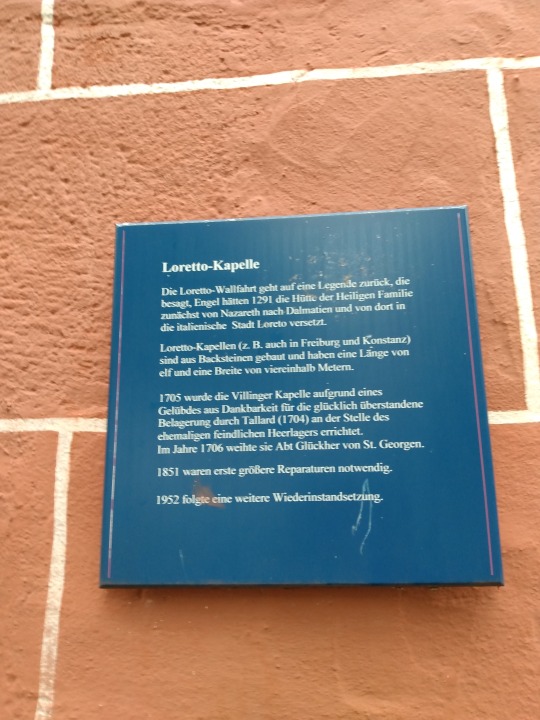
Memorial plaque explaining the nature of loreto chapels and the history of this specific one, also mentioning the major repairwork done in 1851 and 1952 repectively.
With predominantly families and young folks moving into this new quarter of the town where the French encampment had stood in 1704 (and which has street names reflecting its history), teens in particular came to appreciate the chapel. The back of the duc de Tallard's tent, or rather the religious memorial thereof, became the place to smoke and drink away from the prying eyes of parents.
...While Tallard may not have managed to seize the town, in a way, he continues to be infulential in corrupting the modern youth through aiding and abetting them- a rather more lasting legacy than his failed siege of Villingen.
Notes and credits:
[1] Dielhelm, Joseph H.: Denkwürdiger und nützlicher Rheinischer Antiquarius, Welcher die Wichtigsten und angenehmsten geograph- histor- und politischen Merkwürdigkeiten des ganzen Rheinstroms von seinem Ursprunge an, samt allen seinen Zuflüssen, bis er sich endlich nach und nach wieder verlieret, darstellet, vol. II, Stocks Erben und Schilling, Frankfurt am Main 1740, 1st edition, pp. 12-13.
[2] de Merode-Westerloo, Jean-Philippe-Eugène and de Mérode-Westerloo, Henri Marie Ghislain [Ed.]: Mémoires de Feld-Maréchal Comte de Merode-Westerloo, Chevalier de la Toison d'Or, Capitaine de Trabans de l'Empereur Charles VI., vol. I, Wahlen et Compagnie, Brussels 1852 [first published 1840], pp. 287-288.
Image credits:
Who Would Win? meme-template via imgflip [accessed 03 September 2021].
Camille d'Hostun, duc de Tallard via Wikimedia Commons, uploaded by user Mmm448~commonswik [accessed 03 September 2021].
Villingen, excerpt from Topographia Sueviae [Swabia], Matthäus Merian, Frankfurt am Main 1643/1656, via Wikimedia Commons uploaded by user Joergens.mi [accessed 03 September 2021].
Johann Anton Schilling (1694-1724), Belagerung Villingens im Spanischen Erbfolgekrieg 1704, oil on canvas, 1716. In the collection of Franziskanermuseum Villingen, via museum-digital:baden-württemberg [accessed 3 September 2021].
Location photographs, images of Denkwürdiger Antiquarius: mine.
English translations from German and French: mine.
#history#18th century#german history#french history#camille d'hostun duc de tallard#jean philippe eugène de mérode marquess of westerloo#wars of the spanish succession#military history#siege#siege of villingen 1704#lorettokapelle#loreto chapel#villingenschwenningen#baden württemberg#louis xiv#asterix and obelix#battle of blenheim#john churchill 1st duke of marlborough#eugene of savoy#(mentioned)#images#my pics#r travels
35 notes
·
View notes
Photo
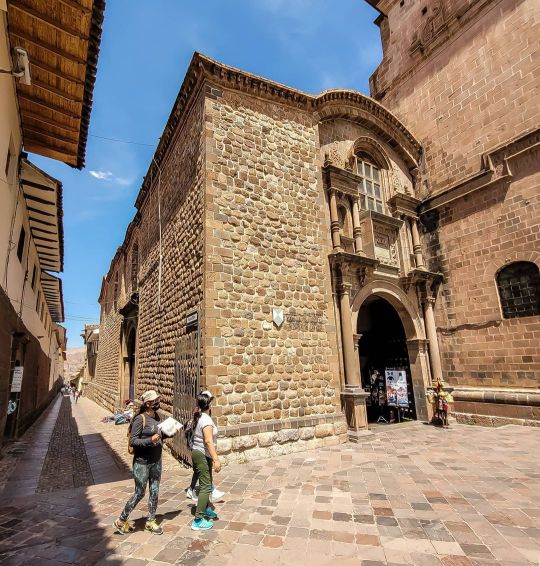
Junto a la iglesia de la Compañía de Jesús se encuentra la pequeña capilla dedicada a Nuestra Señora de Loreto, labrada en 1652 por el arquitecto Francisco Dominguez Chavez de Arellano. #cusco #igerscusco #peru #igersperu #barroco #barocco #baroque #barock #arquitectura #architettura #archilovers #archilife #architecturephotography #architecture #capilla #chapel #virreinato #colonial #patrimonio #patrimoniomundial #heritage #worldheritage (en Iglesia de la Compañía de Jesus-Cuzco) https://www.instagram.com/p/CUwHmogga99/?utm_medium=tumblr
#cusco#igerscusco#peru#igersperu#barroco#barocco#baroque#barock#arquitectura#architettura#archilovers#archilife#architecturephotography#architecture#capilla#chapel#virreinato#colonial#patrimonio#patrimoniomundial#heritage#worldheritage
10 notes
·
View notes
Text
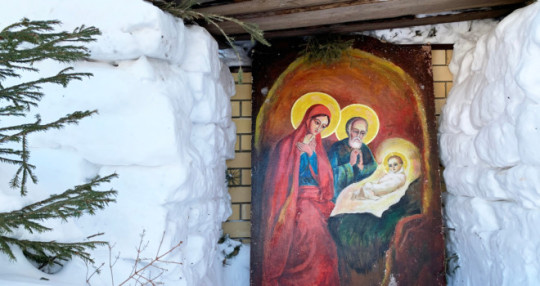
The Word Was Made Flesh: An Advent Reflection On The Incarnation
Loreto is a small medieval city, perched atop a small mountain overlooking the Adriatic Sea on the east coast of Italy. If you look up from the plains below, you see a great wall reminiscent of a fortress, a forbidding citadel; in reality, it is a spiritual doorway, a place of meeting. Within the walls is a great basilica and, beneath the dome of the basilica, a marble chapel within which is an ancient house, simple in its construction but resonant with history. This is the house of Nazareth where the Annunciation took place, where it is believed the Holy Family lived and St. Joseph died — the Holy House that was and is a witness to the mystery of the Incarnation.
Loreto is a place where it is easy to pray. The ancient stones of the Holy House seem to speak, like the stones of Jerusalem that Jesus said would cry out. In this House of Mary, you are an honored guest, and her hospitality is the peace and serenity of encounter with God. Words written over the altar in that little house remind you of the significance of this place: “Here the Word was made flesh.” We believe in the Incarnation, and yet coming to the place where it happened, one encounters the mystery in a new way. Of course, we do not need to go to Loreto to experience this: We need only reflect on the account of the Annunciation and we can enter into the mystery in the Word of God.
The Holy House of Loreto stands as a sign to the world that the mystery of Christ is real. The story of God’s becoming man is not a myth or a legend, not something esoteric or abstract or beyond our comprehension. The House is also a sign of God’s invitation for us to enter into the mystery of Christ’s life here and now. The mystery of the Incarnation is to be part of our everyday lives, because it was lived in the home of Nazareth and can be lived in every other home, in every other life.
For centuries, the people of Israel waited, hoping that the promised Messiah would come in their lifetime. It is said that every Jewish girl wondered if she would be the one chosen to become his mother. These were not entirely innocent hopes: Many Jews understood the Messiah to be a political and military leader, so the honor of being his mother would have brought with it earthly glory, a vindication of Israel, and the restoration of a downtrodden people. The mother of the Messiah would, without doubt, symbolize these things in her own person. However, who would ever have thought that the Messiah would come in such a quiet, humble way?
Perhaps the House of Nazareth was silent for the few moments following Our Lady’s assent, but no doubt Heaven was ecstatic in praise at the Incarnation of the Son of God in the womb of the Virgin, as He took upon Himself the flesh of sinful humanity and transformed it. Who would have ever thought that God would become man and live in our midst? He could have redeemed us from above, but He chose to become one of us, like us in all things but sin, even while being taken for a sinner. This is the mystery of the Incarnation that we celebrate at Christmas and prepare for in Advent.
But after those few moments of glory, it was a return to ordinary daily life for the Mother of God; the world was, as yet, unaware. With the Son of God growing within her, this first Christian disciple began the era of the New Covenant as a missionary, setting out immediately to bring the presence of Christ to one who was in need, her cousin Elizabeth. Full of grace, with the God of love within her, Mary shared that love in her act of service.
In those first moments, hours, and days of the Incarnation, in Mary’s service we see that the mystery must take effect in our daily lives, ordinary and humdrum as they may be. As God has become man to live His life with us, He asks us to come to Him and live our lives with Him. The Incarnation is a two-way street: God took flesh so we may come to share in His divinity. Our restoration is not to a previous life, but to a new way of living. This is the heroic way of the saints, the spiritual way that is the greatest adventure of all because it is a journey into the life of God, into His mystery, where we will find the fullness of life. Advent is the time when we prepare for this transformation: Liturgically it is four weeks, but it is really our whole lives, a preparation for the second coming of Christ. This is what our Christian vocation is all about.
The Annunciation was the moment when Mary discovered her vocation, and Jesus Christ revealed His. The mystery of Christ’s Incarnation, of His vocation in our midst, leads us to reflect on our own vocation. At the Annunciation, Mary echoed what Jesus would say in the Garden of Gethsemane: “Thy will be done.” We are called to make this assent in our lives. God has a plan for us that is firmly situated within His plan for all of humanity; we are to incarnate Christ in the world through our lives. We have the choice to embrace that plan or to reject it, and we can even pick and choose, doing the bits we like and ignoring those we do not. God has given us the gift of free will, and He allows us to decide. Ultimately, though, our true happiness lies in assenting to God’s will, in saying yes to His plan in its totality and discerning, through prayer, what we are to do in the circumstances He presents us with.
This can be difficult. Most of the time, it seems that God speaks to us indirectly, but the truth is that He is always communicating with us, and we are not always focused enough to listen. It’s usually not obvious, like the angel Clarence in It’s a Wonderful Life. More often, God asks us simply to turn to listen to Him in prayer.
Pious artists often depict Mary at prayer when Gabriel appears. Whether this reflects a historical reality is less important than that it reflects a spiritual reality: Mary was a woman of profound prayer. When the angel came, she was already tuned in to the voice of the Lord, listening to receive His word. If we wish to discover what God asks us to do at any stage in our lives, we must also be men and women of prayer. And within the context of the relationship of prayer, we will discover who we are and what God offers us as our vocation.
A few years ago, a friend of mine, an artist, was discussing his latest project with me. He wanted to do a series of paintings on the Annunciation, and he had been studying the great masters. As an artist, and one with deep faith, he wanted to present the event in a new way, perhaps revealing a dimension that others had neglected. He told me that he was working on the expression on Mary’s face, capturing her awestruck reaction to seeing a heavenly being. I thought about it for a moment and then suggested that he look to the angel: What was the angel’s reaction when meeting Mary? After all, it was an encounter between the heavenly being and the greatest creature God had ever made, His own Mother. How did Gabriel look on Mary?
The Gospel of the Annunciation invites us to gaze on Mary and to pray in our hearts the words of the liturgy: How shall I fittingly praise you? “Blessed are you among women,” St. Elizabeth declares at the Visitation (Luke 1:42): This is humanity’s response. We hear God’s response in the acclamation, “How beautiful you are, my beloved, how beautiful you are,” from the Song of Songs (1:15), as He has filled her with His grace.
As we gaze on her face, therefore, we see the face of the Lord. In her virtues we see His. As His humanity was formed in her womb, His divinity formed her in holiness. In her graciousness and kindness, we see God’s as she imitates the One who made her perfect. No one was ever turned from Mary’s door, which the first Christians discovered while she was with them, and in testament the Church has loved her and praised her in every age as Mother of the Church. She is the one who can guide us to Jesus and to our place within the communion of His disciples.
In these Advent days, we not only accompany the generations who were waiting for the Messiah, but we also accompany Mary in the last weeks of her pregnancy as she waited for the fulfillment of the promise made to her and to the Jewish people. Advent is Mary’s time, during which she prepares us to receive her Son as she received Him in her womb. She must have contemplated His presence within her, immersed herself in His presence. In these days, we can look at her and allow her to take us by the hand and lead us into the midst of the new life Christ offers us, to discover and to live our heavenly vocation.
We are in her womb also, and she seeks to form us in the image of her Son.
Mary, the faithful one, the Mother of God, invites us today, as we ponder the Annunciation, to follow in her footsteps. At the foot of the Cross we were given into her care: We are hers. If we understand Mary’s yes to God as representing that of all men and women, then we can begin to enter into the depths of the Christian life — beginning in that little house where the Word became flesh in her so He could become flesh in us and in our lives.
FR. JOHN S. HOGAN
2 notes
·
View notes
Photo
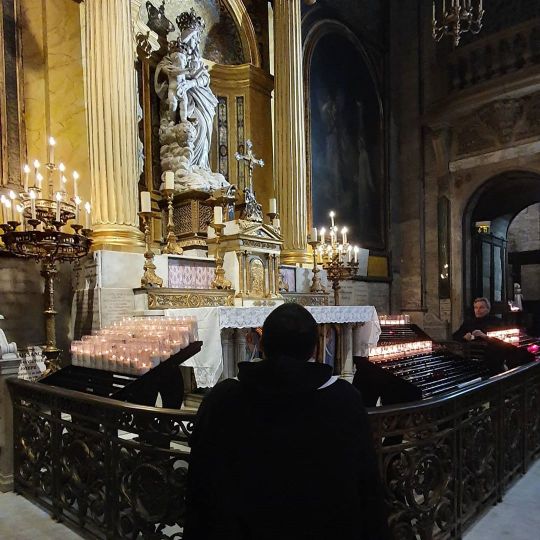
After Mass in the Miraculous Medal chapel, we made a pilgrimage to Shrine of Our Lady of Victories, a place loved by St Thérèse and her sainted parents. Kneeling at the feet of Our Lady of Victories I sang the Lent Prose, "Attende Domine", imploring God for mercy on us sinners. We then sang the Litany of Loreto, and asked Our Lady to protect us and dispel the coronavirus threat. As the bells rang out, we prayed the Angelus, and then I sang the 'Ave Regina cælorum' in thanksgiving for the successful completion of our Rosary pilgrimage. (at Basilica of Notre-Dame-des-Victoires, Paris) https://www.instagram.com/p/B9guyOGjZsd/?igshid=uqshs7ukv7je
17 notes
·
View notes